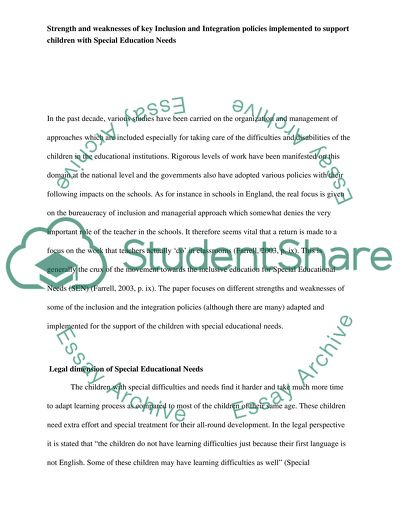Cite this document
(“Strengths and Weaknesses of Key Inclusion and Integration Policies Essay”, n.d.)
Retrieved from https://studentshare.org/sociology/1451124-1-discuss-the-strengths-and-weaknesses-of-key-inclusion-and-integration-policies-implemented-to-support-children-with-special-e
Retrieved from https://studentshare.org/sociology/1451124-1-discuss-the-strengths-and-weaknesses-of-key-inclusion-and-integration-policies-implemented-to-support-children-with-special-e
(Strengths and Weaknesses of Key Inclusion and Integration Policies Essay)
https://studentshare.org/sociology/1451124-1-discuss-the-strengths-and-weaknesses-of-key-inclusion-and-integration-policies-implemented-to-support-children-with-special-e.
https://studentshare.org/sociology/1451124-1-discuss-the-strengths-and-weaknesses-of-key-inclusion-and-integration-policies-implemented-to-support-children-with-special-e.
“Strengths and Weaknesses of Key Inclusion and Integration Policies Essay”, n.d. https://studentshare.org/sociology/1451124-1-discuss-the-strengths-and-weaknesses-of-key-inclusion-and-integration-policies-implemented-to-support-children-with-special-e.


